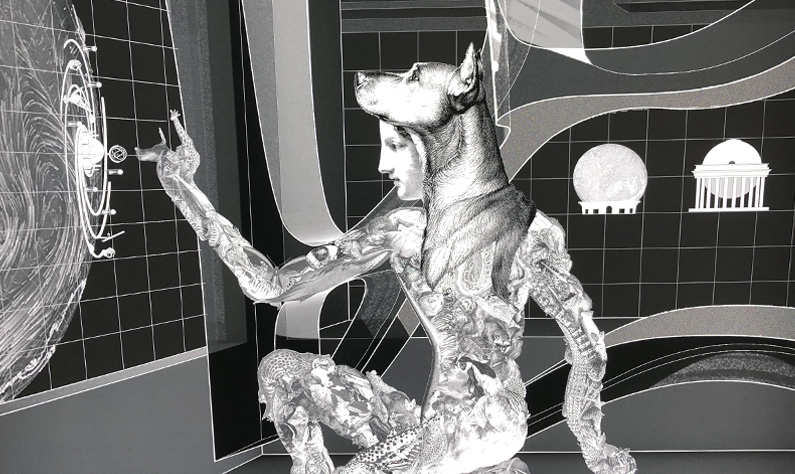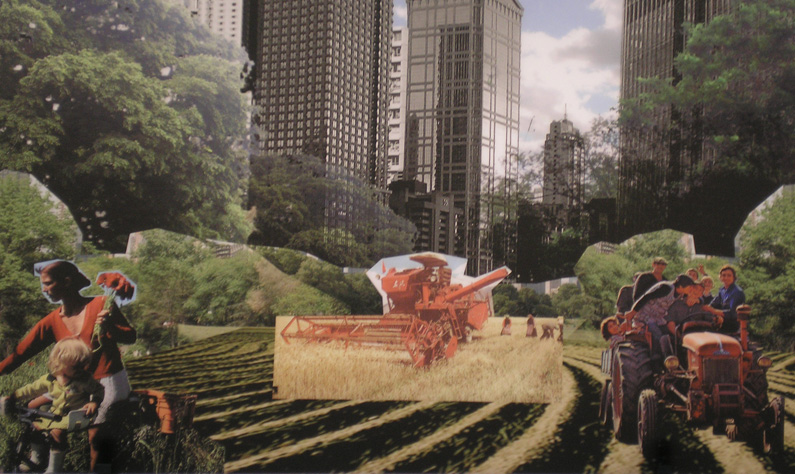
INTRODUCTION
The format of writing known as the essay is a genre of its own, separate from, for example, the scientific treatise or the research paper. The essay presents the author with the exercise of nailing down a theme. Sometimes this leads to detours into logical cul-de-sacs, sometimes it results in giant leaps in an argument. It is rarely unequivocal, unchallengeable or without objections. The essay demands a lot from its reader, both forgiveness and reflection; both being able to zoom out and zoom in.
This is a long essay in four parts with the title ”Capitalism and the wicked problems”. It sounds like the title of a fairy tale, but the text is a reflection based on the observation that the capitalist system, for the first time, is the dominant economic system, globally. What does this responsibility entail, not least for capitalisms perhaps premier institution: ownership?
Part one (”from licence to operate to ability to solve”) is about how the capitalist institutions have always lived in symbiosis with other institutions. Capitalism has been able to focus on creating profits for its owners, and doing this by focusing on a selection of problems that have solvable using industrial methods. Will the system shoulder a greater responsibility now that other systems are faltering?
In part two (”what we can’t measure, we shouldn’t do”) the difference between tame and evil problems are described. The type of problem solving that has been honed during the past hundred odd years is less successful at solving what we can call wicked problems – and these are becoming more numerous. Can the ruling view on how to solve problems be amended?
The third part (”to be legitimate – again”) deals with the legitimacy crisis of capitalism during the 1960s and how the system faces a corresponding situation today. The system successfully redefined itself and it’s role on this occasion – will it succeed with this once again?
The closing part (”third generation business critical”) is about how companies and institutions are expected to take responsibility for many of the evil problems that we encounter in many areas: climate, social injustice, economic disparity and so on. The pressure to change as well as the direction of change is there; what is often lacking is the capacity for change and this requires a reckoning, in particular, with the preconceptions, leadership and structures from earlier generations of capitalism. Will this happen and, if so, what will be the driving force?
CAPITALISM AND THE WICKED PROBLEMS
PART I: FROM ”LICENCE TO OPERATE” TO ”ABILITY TO SOLVE”
For the first time the world is dominated by one economic system. That is the capitalist system. So writes Branko Milanovic in his book ”Capitalism, Alone” [1]. Capitalism appears to have beaten the competing alternatives. Or at least forced them to reform themselves so that they can co-exist with the capitalist system – as it looks today [2].
What does this hegemony for the capitalist system mean for society in general? We can safely assume that it, directly or indirectly, has affected culture, politics and many other sectors of our present [3]. This applies, in particular, to values, norms and views. And when capitalism takes over and forces the alternatives to adapt or disappear this also fundamentally changes the responsibilities of capitalism itself. In the end it comes down to the owners.
The owner is a central institution in the capitalist system. To own parts or the entirety of a business involves a number of rights, not least to the economic result of said business. In a publically traded company this right is enshrined in the laws governing publically traded companies and this clearly states that the company should turn a profit. The level of profit is something that the company itself decides on, but the company can not choose not to strive to make a profit [4]. This law is actually meant to safeguard the rights of minority share holders in the company rather than the other way around [5].
The aim to profit does not naturally mean that the capitalist system and its owners can set themselves apart from society. Quite the opposite, the society that is often regarded the most capitalist, i.e. USA, is permeated by the notion that ”those who are very strong must also be very kind” [6]. The capitalist systems starting point, however, is that companies first deliver yearly dividends. Then it is up to the owners to decide on how these should be used; some donate them to universities, museums or hospitals, others build palaces, buy cars or fund their political careers. Many invest in other companies.

The experiences of capitalism are framed by strong conceptions of its purpose, both in regard to what are ”legitimate” problems and how they should be solved.
That the experiences of capitalism, embedded in its institutions, are becoming usable in an increasing number of fields, is seen as something good by many people. The idea is that competition leads to real – not imaginary – needs being met and the purpose of making a profit leads to the aspiration for effective businesses [7].
But the experiences of capitalism are framed by strong conceptions of its purpose, both in regard to what are ”legitimate” problems and how they should be solved. One of the key figures of modern capitalism is Frederick Taylor, who, despite being active more than a century ago, still has a great influence on how businesses are organised and run. Taylor viewed this as a science and scientific management was put in society’s service to come to grips with the problem that Taylor identified as: ”the inefficiency in almost all of our daily acts” [8]. On the one hand Taylor thought that his system should be applicable for all parts of society, including philanthropic organisations, cultural institutions and schools, but it was primarily the burgeoning industrialism that embraced his ideas. The problem was inefficiency, solving this problem was the mission. And the solution lay in a scientific system of organisation and leadership.
When it came to making and distributing products and services (and essentially only there) industry became improbably successful over the coming 120 years.
There are tasks in society that the ”scientific efficiency-attempt”, that Taylor created and industry embraced, can’t solve.
In the beginning of the 1970s city planner Horst Rittel [9] contemplated the problems he had to solve. The ”scientific system” that many societal players, and above all the industry, had developed following Taylors lead, was especially suited to tasks such as “supplying all buildings with suitable drainage, water and electricity”. Rittel called them tame problems, problems that we can readily define, that we have seen before and that we know that we can solve. He proudly acknowledges that the building industry and companies of architects, planners and other ”professionals” have been incredibly successful in this field.
But, argued Rittel, as a city planner he was now faced with completely different kind of problems. How do you build neighbourhoods that are integrated and not segregated? How do you construct cities that invite involvement, participation and responsibility? He called these problems wicked and here Taylor’s system functioned less well.
So: there are tasks in society that the ”scientific efficiency-attempt”, that Taylor created and industry embraced, can’t solve. The society that on the one hand gave the capitalist system and industrialism the space to successfully, effectively and productively solve known problems (granted, these were quite complicated problems) needed some other institution to take on the responsibility of solving the wicked problems and complex challenges. In Sweden the players in this system were government institutions, authorities, administrations, municipalities, regional governments, Parliament, the parties of the labour market, national and international organisations, alliances and assemblies. They set out to solve what we had not encountered before, what we could not quite define, what required many perspectives clashing with each other and a long-term time plan. A labour with uncertain outcome, but for the good of everyone, undertaken with great transparency and honesty. This was the idea.

The consequence is that ownership in the capitalist systems is no longer only a question of rights but also one of responsibility.
Now we move forward to 2019. Right now two things are happening, on a global scale. Firstly, for some time now, an increasing number of problems are presenting as ”wicked” (and new ones are added to the list): the environmental issue, social sustainability and so on. These are problems that fit nicely into the wicked category: they are new to us, we do not know if they can be solved, there are many potential solutions and we lack the criteria to unequivocally evaluate which is the “best” solution. We may not even have a ”language”, a terminology or a set of concepts with shared definitions that we can use to describe and talk about these questions. Secondly, the institutions that traditionally and historically handled problems with this degree of wickedness in our world (both at the state level and beyond) have been waning.
The consequence is that ownership in the capitalist systems is no longer only a question of rights but also one of responsibility.
It is interesting to reflect on the fact that this observation is being made exactly 50 years after the youth revolt of the 1960s, a revolt that culminated in demonstrations in the streets, occupations and giant festivals in the name of ”peace, love and understanding”.
After two decades of private and public investments in rebuilding after the war, which led to job opportunities, which in turn increased prosperity and fuelled the demand for goods and services, the business world was surprised (particularly its owners) by the power and vehemence of the attacks.
Until then the business world had been heavily focused on Taylor’s old question: how do we increase the efficiency of our businesses? The demand was insatiable, the objective was introducing the ”scientific system” of management and organisation in businesses in order to distribute products in the quickest and least costly way possible. A former ASEA-director described how they during the 1950s sent out letters to their customers urging them to treat their sales representatives with respect since ”it is harder to find good sales representatives than finding new customers for ASEAs’ products” [10].
Sector after sector of the business world was ”industrialised” according to this mind-set. But all these efforts were now in question. The root lay in criticism of the basic purpose of the business: making money for the owners. Questioning the motives of ownership and by extension capitalism as a system (or vice versa) was something that greatly worried certain interests. This prompted The Swedish Employers Association SAF (today Swedish Enterprise) during the mid-sixties to request that reputable researchers develop a ”scientific” description of the values provided to all parts of society by the business world and industry, not just to the owners.
This turned into one of the few “Swedish” inventions within the field of corporate management: the stake-holder model. This views the company as an open system, that has many relationships with the world around it (not just with customers and owners) and that these relationships are about exchanges, not just of money but also of trust, security, experiences. Furthermore this exchange has to create perceived values for both parties. Sometimes one or more of these parties may be considered more important than others, but they are all in the equation and in order for a company to have the potential for long-term survival it has to successfully create value, over time, for all parties: employees, owners, customers, suppliers, society’s other institutions and so on.

Legitimiteten handlar inte bara om att uppfattas som ”värdig” att få rättigheter, utan också om att visa ett ansvar att agera.
In Sweden the business world managed to persuade its surroundings that this was their mind-set and that – even if they had achieved varying success in these relationships – they were still working to create value for all parties. With certain concessions to different parties during the 1970s (The Employment (Co-Determination in the Workplace) Act, Åman-laws and – perhaps the hardest pill to swallow – the employee fund debate) the business world emerged from the criticisms largely unscathed [11]. With the help of communication and rhetoric (and some tweaking of their operations) they were able to recreate the legitimacy they came so close to losing in the wake of the street-demonstrations of the 1960s [12].
This ”capitalism with a human face” was of great benefit when Swedish companies 30 years later, after the collapse of the Eastern block, were among the first to establish themselves in these newly opened markets. Being able to prove that you created value for all parties became an exam question that gave these companies the sought after ”licence to operate” in these markets (the current matters involving Swedbank, Nordea, Den Danske Bank and others prove that this still was mostly a question of communication and rhetoric).
The last time the owners in the business world and the capitalist system were called into question, legitimacy was recreated by investing in a communicative leadership. Will this work again in the ”crisis of capitalism” that is now on the horizon? In the absence of ”the other” institutions and systems, designed to, from other points of attack, solve wicked problems and the case that the wicked problems are increasing, becoming bigger and more wicked, eyes are turning to how the dominating capitalist system is going to be able to shoulder its responsibilities.
Now it is no longer a question of capitalism needing a ”licence to operate”; it is about the capitalist system proving that it has the ”ability to solve”.
The threat to capitalism and to its key institution, the owners, still boils down to creating and maintaining legitimacy and trust. It comes down to making owners understand that they do not just have the right to – ”licence” – but also the obligation to act. Owners have to show that they have the ability to solve the major societal issues, the wicked problems we are faced with. Lacking other institutions and other systems than the capitalist one the owners of the capital have to shoulder this responsibility.
We have to be able to trust the owners and the capitalist system. Can we?
Foot notes:
[1] Milankovic’s book is discussed by Emanuel Sidea in Fokus 18-24 October 2019. He notes that capitalism comes in different ”flavours” in different contexts: compare, for example, the American and the Chinese interpretation of a capitalist economy.
[2] In Fred Åkerströms chapbook pastiche the lyric goes: Sådan är kapitalismen (Such is capitalism) / otack är den armes lön (thanklessness is the wage of the wretched) / Det är de rikas paradis men (It is the wealthy’s paradise, but) / ingen hör en fattigs bön. (no one hears a poor mans prayer)
[3] The term hegemony is, among other things, a term used in social theory, coined in the 1920s and ‘30s by the Italian Marxist Antonio Gramsci. He posits that capitalism is built on a dominating strata of society maintaining their standing by virtue of those being dominated accepting the prevailing order. From the hegemony of those in charge values are transferred to those who are dominated, who in turn interpret, and accept, these values as common sense. Antonio Gramsci’s hegemony as such is about a dominance over culture, rather than economy and politics. The dominance also governs attitudes and points of view, and accordingly decides the norms of society. (Wikipedia)
[4] Indeed, there is a form of company that has a limitation in the demand for profit. It is called ”company with certain profit sharing limitations” so designated by the company name being followed by the letters (svb). This kind of company is regulated in Aktiebolagslagens kap. 32 and the purpose is mainly to provide a form of company that is suited to run businesses that were primarily run as public services.
[5] Nachemson-Ekwall, S. (2018) Innovationsdrivande och ansvarsfullt styrelsearbete; det börjar med syftet. Vinnova 2018
[6] In 2015 Aftonbladet examined the origins of this motto, attributed both to the cartoon character Bamse and Pippi Long-stockings. ”The literary origins take us back to 1947 and the illustrated book ”Känner du Pippi Långstrump?”. In it, beloved author Astrid Lindgren, explains Pippis actions by saying:
”Då blir de bägge tjuvarna så rädda och börjar gråta. Pippi tycker synd om dem och ger dem var sin gullpeng att köpa mat för. För Pippi är snäll. Den som är väldigt stark måste också vara väldigt snäll”.
”Then the two thieves become frightened and start crying. Pippi feels sorry for them and gives them a gold coin each to buy food. Because Pippi is nice. Someone who is very strong must also be very kind” it reads.
So the words are not Pippi’s but rather spoken of her.”
(Aftonbladet May 19, 2015)
[7] Emanuel Sidea in Fokus (18-24 October 2019) points to a change in behaviour in the premiere figures of capitalism, the owners, to consume rather than invest accelerates criticisms of capitalism.
[8] Taylor, F.W. (1911 [1998]) The Principles of Scientific Management (Dover Publications, New York., p. iv)
[9] Rittel, H.W. & Webber, M M (1975) Dilemmas in a General Theory of Planning, Working papers from The Urban & Regional Development, p 155-169.
[10] Lars-Erik Lindbäck, notations from conference at Institutet för Företagsledning (IFL), 2002
[11] This worked so well that the State itself started running businesses using the capitalist model as an image; thusly the State created Svenskt Stål SSAB, Svenska Varv and countless other state owned groups. In due time agencies like Televerket and Vattenfall came to be ”privatised”, still with the state as majority owner, but now with a ”capitalist owner relationship” to the new companies.
[12] This is very well described in SK-gruppens jubileumsskrift Samrådsgruppen för kommunikationsfrågor, 50 år, authored by Lars Stålberg (2009, unpubl.)

Writes about politics and society.

